GreenPeace – a Non-Governmental Organization (NGO) with the mission of “Protecting the safety and sustainable development of the earth” recently launched a campaign to expose the shocking truths behind Dove’s famous “Real Beauty” campaign. Not only honoring the true beauty as what Dove exposes to the public, GreenPeace has “lifted the curtain” on the difference between Dove’s marketing activities and its impact on the environment.
2024 marks the 20th anniversary of the “Real Beauty” campaign – the symbol that made Dove famous since 2004. Over the past 2 decades, Dove has strived to break down unrealistic standards of female beauty, thereby honoring natural, authentic beauty. It is this meaningful message and beautiful Brand image that has covered up the hidden corners of the environment that Dove has never revealed.
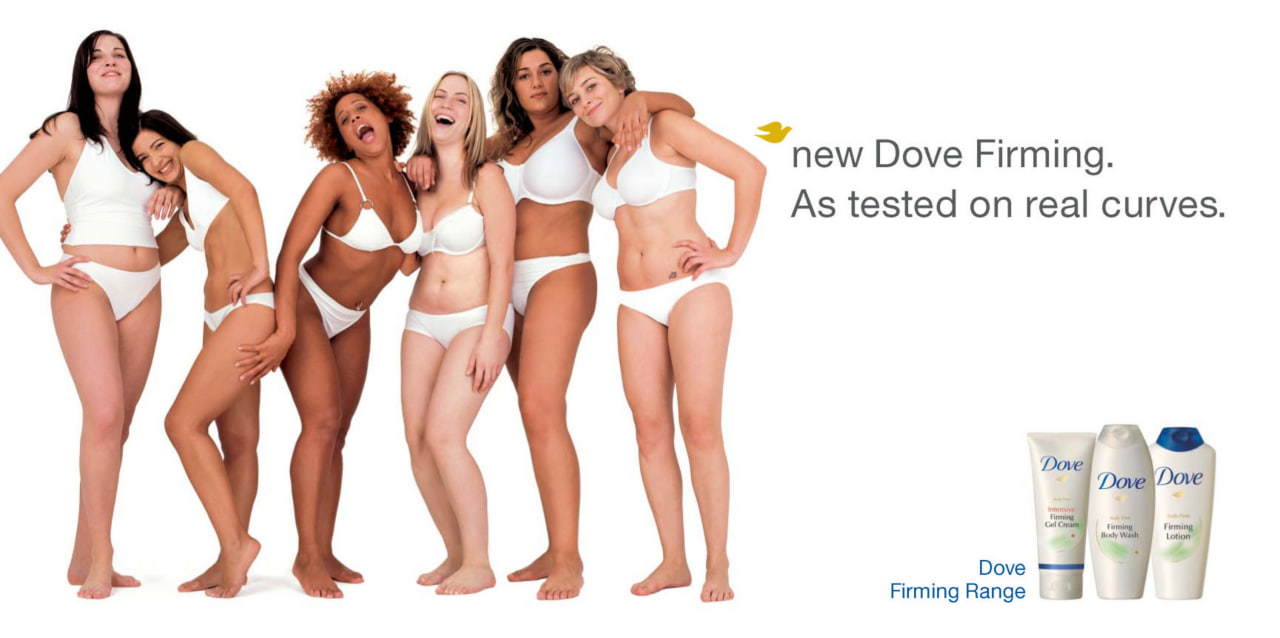
“Real Beauty” – the campaign that made Dove famous for 2 decades
In this context, GreenPeace has released a film called “Toxic Influence: The Dark Side of Dove”, conceived by the talented and BAFTA-nominated director – Alice Russell. In their film, GreenPeace invited mothers and their daughters to sit down and share on the occasion of the 20th anniversary of the “Real Beauty” campaign. They were shown a series of Dove advertisements and initially praised the brand’s message of honoring women’s true beauty. One woman even expressed her opinion: “When I think of Dove, I think of products that are good for the environment and good for your skin.” Describe Dove with adjectives “clean, healthy and for all”However, after seeing the images in the Video, they gradually changed their minds about Dove products.
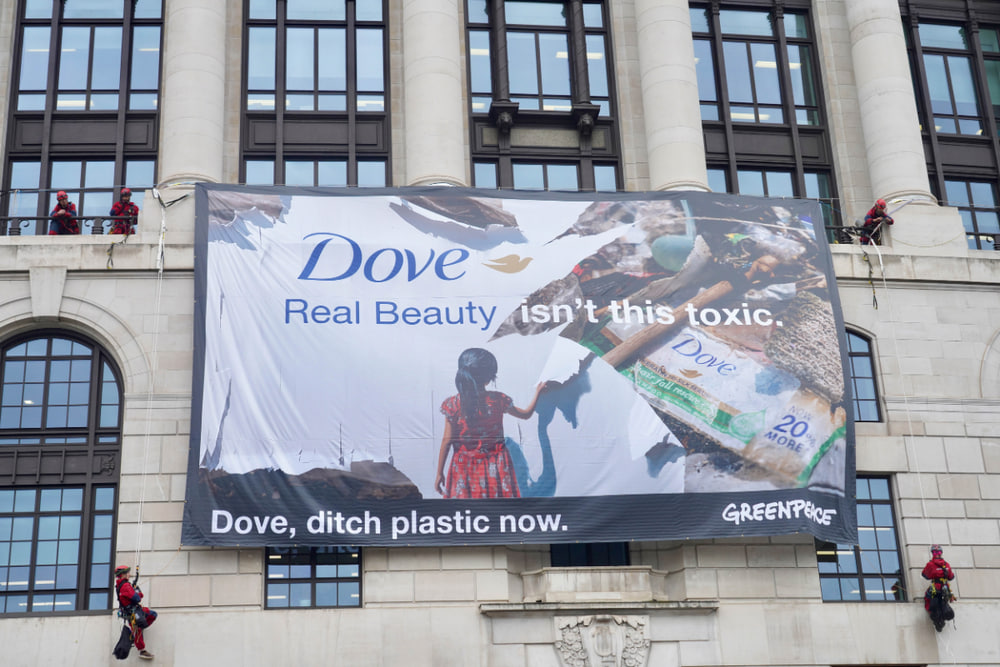
GreenPeace Slams Dove Over Plastic Pollution Behind ‘Real Beauty’ Campaign
Accordingly, GreenPeace has exposed the truth behind Dove’s marketing activities. Reality has proven the complete opposite. Unilever – Dove’s parent company is one of the largest sources of plastic waste globally. The impact of Dove’s plastic waste is particularly serious in developing countries such as the Philippines, Indonesia and India. Greenpeace activists have noted that this clogs drainage systems, pollutes water sources and aggravates flooding in local communities – the very people Dove claims to support through its marketing campaigns. Through these vivid and realistic images, GreenPeace has exposed the plastic waste crisis behind Dove’s famous “Real Beauty” campaign and criticized the million-dollar profits that have made Dove forget its responsibility to protect the environment.
Greenpeace’s campaign was not limited to digital platforms, but also led to a tense protest at Unilever’s London headquarters. Greenpeace activists appeared next to giant Dove product designs that spoke to the negative impact Dove has on people’s lives. Banners proclaiming “Real Beauty isn’t this toxic” were hung on the building’s facade, demanding that Dove abandon its dependence on plastic.
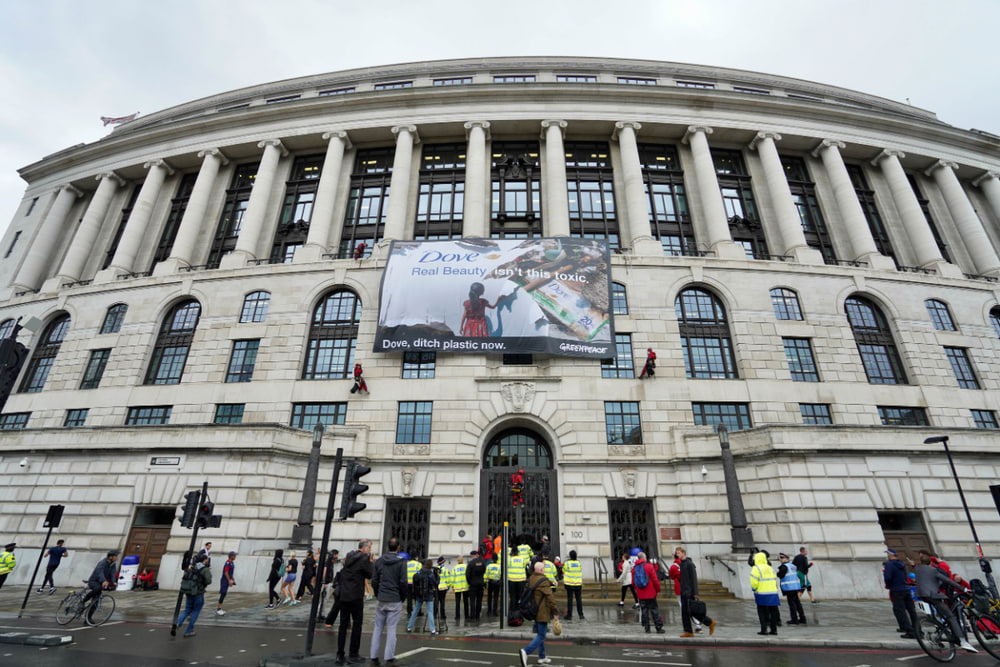
Protest in front of Unilever headquarters in London
In a strong statement, Greenpeace is calling on Dove to take immediate action to address the environmental impact of the plastic crisis caused by Dove. The solution proposed by Greenpeace is for Dove to stop using plastic packaging and switch to more sustainable options. Greenpeace is even encouraging consumers to boycott Dove products until these changes are made.
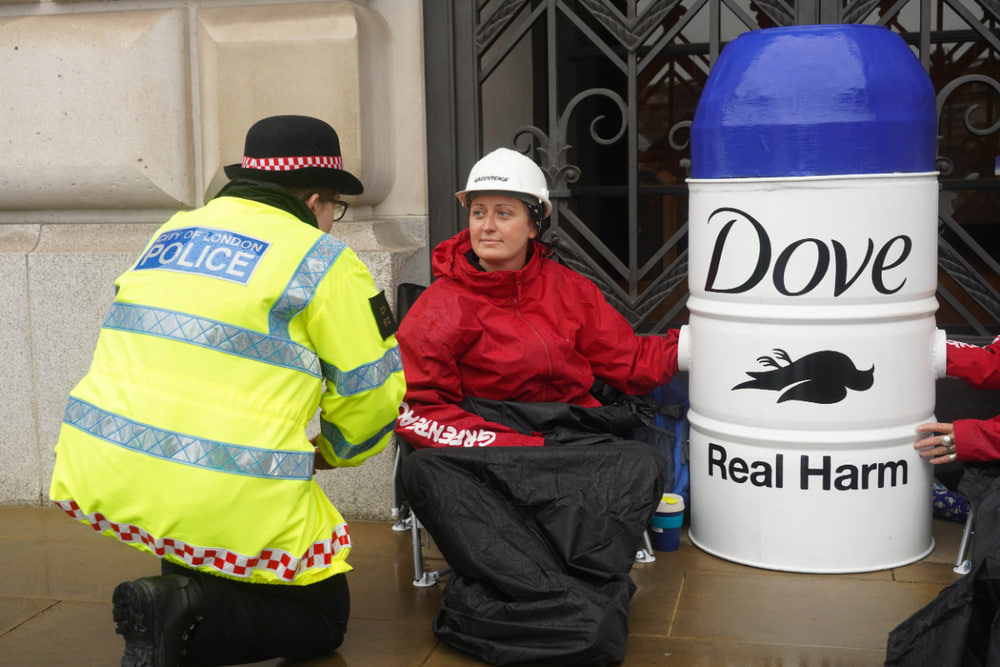
Social activists condemn Dove’s plastic pollution
In the face of fierce criticism, Unilever – Dove’s parent company – has announced that the company aims to end plastic pollution through reduction and collaboration. The brand representative highlighted Unilever’s progress in reducing the use of virgin plastic by 18% and increasing recycled plastic content to 22%. However, they also acknowledged that the fight against plastic waste is a long-term journey that requires more efforts. At the same time, they emphasized their commitment to developing alternatives to hard-to-recycle plastics, for a green future for global users. The storm of criticism from GreenPeace can tarnish the brand image, shake consumer trust and the bitter end of declining revenue is entirely possible.
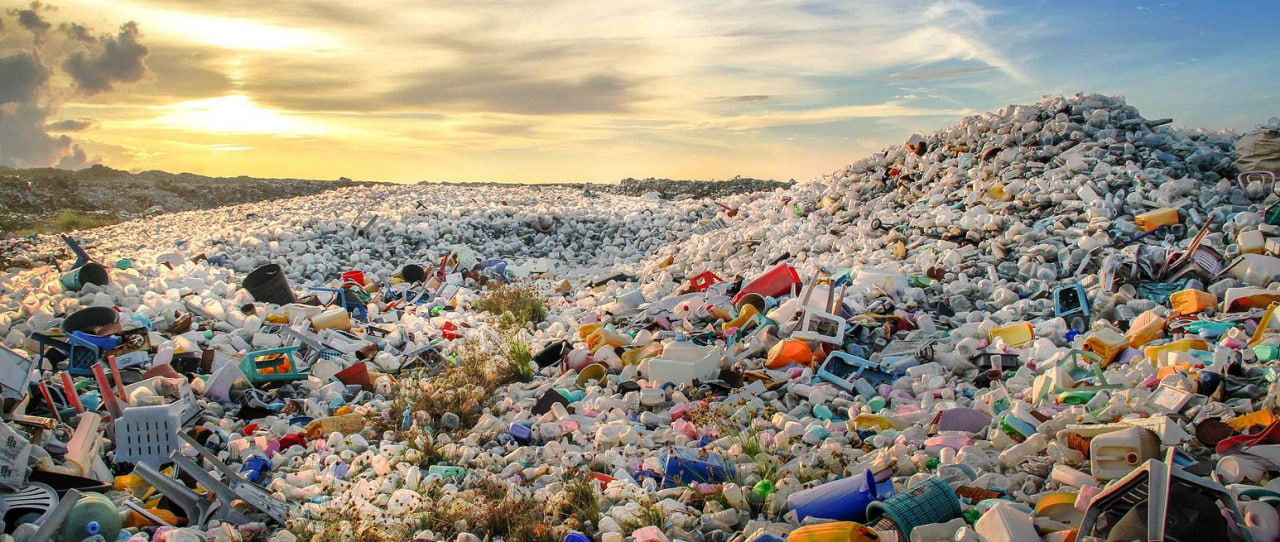
Unilver – Dove’s parent company is one of the largest sources of plastic waste globally
GreenPeace’s campaign challenged Dove’s public image as a brand that is good for the skin and health of its users. Through it, GreenPeace wanted to empower young people to fight against “greenwashing” by brands, and call for action on the harmful effects of Dove to ensure a healthier future for children around the world.
This is not the first time the NGO has targeted famous brands to expose their negative impacts on the environment. Previously, as part of its “Save the Arctic” campaign, GreenPeace exposed the partnership between Lego, a famous toy brand, and Shell, an oil and gas corporation that is still actively exploiting in the Arctic.
Conclusion:
With “Toxic Influence: The Dark Side of Dove,” audiences have witnessed the dark corners that Dove has never told in its marketing activities. It can be seen that GreenPeace’s latest campaign has dealt a heavy blow to “Real Beauty,” while also sounding the alarm and calling for Dove to take immediate action to remedy the consequences for its environment. Through this, GreenPeace has shown its influence in exposing the brand’s “greenwashing” behaviors and promoting change for a greener and more sustainable environment in the future.
Comment Policy: We truly value your comments and appreciate the time you take to share your thoughts and feedback with us.
Note: Comments that are identified as spam or purely promotional will be removed.
To enhance your commenting experience, consider creating a Gravatar account. By adding an avatar and using the same e-mail here, your comments will feature a unique and recognizable avatar, making it easier for other members to identify you.
Please use a valid e-mail address so you can receive notifications when your comments receive replies.
